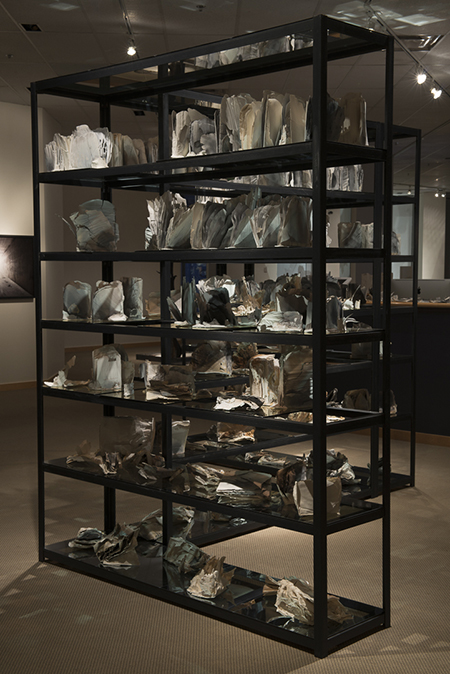
Through February 2, 2020
Scott Johnson’s “Fissure” is in invitation to have our understanding of materials disrupted. The first room, “Lantern,” is driven by a simple enough concept. The floor is covered in what looks like aluminum foil, the light reflecting off of it casting wild, cloud like patterns on the walls, like the sun reflecting off of the ocean. The effect wildly surpasses the first impression. Our sense of perspective is constantly being challenged. Infinity rooms are placed throughout the exhibition space: large, square pillars of glass with what looks like cracked, dry earth on the ground leading on into deep space. As we circle the sculpture, the earth appears to continue in all directions. In reality it is contained within the walls of the pillar. It is as if we have stepped into an alternate universe where time and perspective follow no laws.
The exhibition is also about challenging our relationship with everyday objects. “The Long Slope of Silence” is comprised of a large, multi-shelved unit with what appears to be geodes — something mineral or geological in any case. But as we move closer, we see that they are books, frozen in clay slip, their meaning, completely erased. As curator Jessica Hunter-Larson explains, “The detritus of mysterious experiments occupies shelves, mirrors hint at self-revelation … But a linear trajectory toward knowledge is repeatedly deterred. False starts and curveballs derail and divert: a true path is never straight.” We are never given an answer to the visual paradoxes “Fissure” entices. That’s because Johnson withholds spelling out the rules of engagement. It’s a pure aesthetic, and it’s beautiful to experience.
